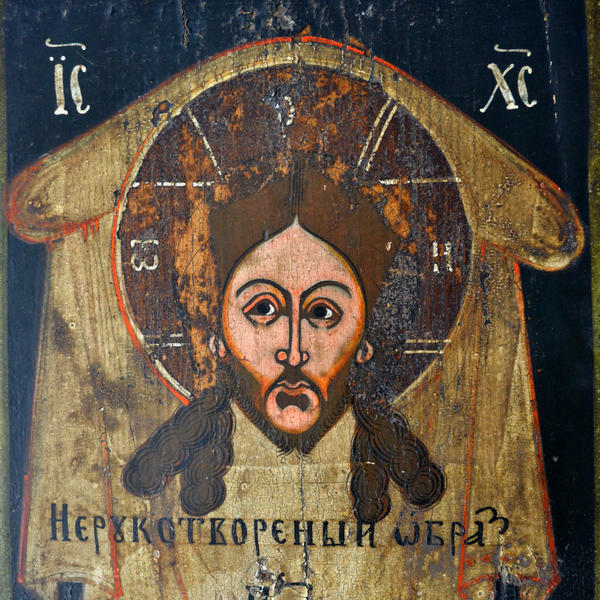Since the old times, the Mandylion, or the Savior Not Made by Hands, has been a popular holy relic in the Russian orthodox tradition. According to the legend, it was made by the Savior himself. The legend goes that when Syrian King Abgar of Edessa contracted leprosy, he sent Ananias, his court painter, to paint a wonderworking portrait of Christ. Ananias failed his mission, and Jesus picked up a piece of fabric, a towel or a shawl, to wipe his face on it, and a miraculous image of his face was imprinted on it. Ananias brought the imprinted image back to his master, and the latter was cured. Ever since, icon-painters have taken to painting Christ’s head on fabric, and the Mandylion was not painted on icons only but at the foot of the drum of church domes.
The Siberian Mandylion of the XIX c. is a quick-painted icon. This means that the image of Christ is simplified, without much detailing, and the knots on the fabric are only but slightly traced. This very icon was painted by some an amateur painter: the color palette is very simple and cartoonish; the painting is very bright and somewhat naïve and ingenuous.
Despite the presence of folk decorative elements, the image is nevertheless canonic. The Savior’s halo is shaped as a full circle and, unlike halos of saints, it has a cross painted inside it. To the right, left and top of the Savior’s head, there are three Greek letters forming the word the Being and pointing out at the divinity of Jesus Christ, and those letters are: Omicron, Omega, and Nu.
The Siberian Mandylion of the XIX c. is a quick-painted icon. This means that the image of Christ is simplified, without much detailing, and the knots on the fabric are only but slightly traced. This very icon was painted by some an amateur painter: the color palette is very simple and cartoonish; the painting is very bright and somewhat naïve and ingenuous.
Despite the presence of folk decorative elements, the image is nevertheless canonic. The Savior’s halo is shaped as a full circle and, unlike halos of saints, it has a cross painted inside it. To the right, left and top of the Savior’s head, there are three Greek letters forming the word the Being and pointing out at the divinity of Jesus Christ, and those letters are: Omicron, Omega, and Nu.


